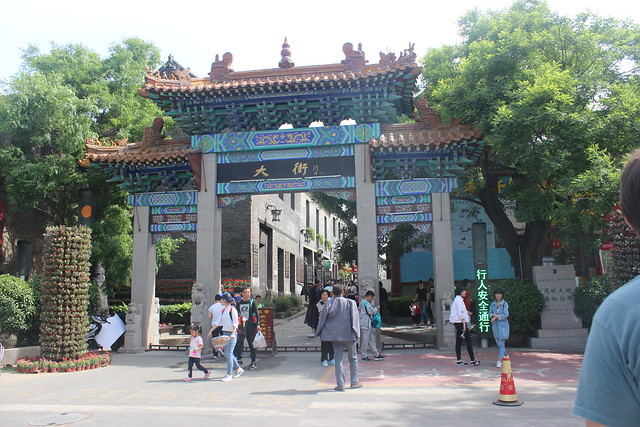 One of the downsides of living in such obscure places is that there is a dearth of information on tourist sites online in English. Trip Advisor typically has SOMETHING, but it’s usually just a paragraph review, and does not have information in the level of detail that I prefer. So, going into our afternoon at Zhoucun Ancient City, I had no idea what to expect. Well, I guess I expected an ancient city, but that wasn’t actually the case. In this instance, “ancient” means the buildings were about 100 years old. Zhoucun used to be a big trading area, so different companies built the buildings here and had their offices. Now, the offices have been turned into shops or museums. The placards explaining each building’s past use were in English and Chinese, but the signs pointing out the current use of the buildings were only in Chinese!
One of the downsides of living in such obscure places is that there is a dearth of information on tourist sites online in English. Trip Advisor typically has SOMETHING, but it’s usually just a paragraph review, and does not have information in the level of detail that I prefer. So, going into our afternoon at Zhoucun Ancient City, I had no idea what to expect. Well, I guess I expected an ancient city, but that wasn’t actually the case. In this instance, “ancient” means the buildings were about 100 years old. Zhoucun used to be a big trading area, so different companies built the buildings here and had their offices. Now, the offices have been turned into shops or museums. The placards explaining each building’s past use were in English and Chinese, but the signs pointing out the current use of the buildings were only in Chinese!
 Zibo city is broken up into several districts. The “downtown” district is Zhangdian, and the ancient city district is Zhoucun. This district was about a half hour taxi ride from downtown Zibo, out into the fields and more rural areas that surround the downtown.
Zibo city is broken up into several districts. The “downtown” district is Zhangdian, and the ancient city district is Zhoucun. This district was about a half hour taxi ride from downtown Zibo, out into the fields and more rural areas that surround the downtown.
Zhoucun is known for two things: silk and sesame crackers. Along with typical souvenir-type shops, snack shops and ceramic shops (the Zibo area in general is known for ceramics), there were many silk shops with beautiful clothing and scarves. We visited this area on our third day in Zibo, so I figured that I could find silks and ceramics in the city of Zibo for less than at this more touristy place. I should have bought the silk there, because I haven’t bene able to find anything like that in downtown Zibo! 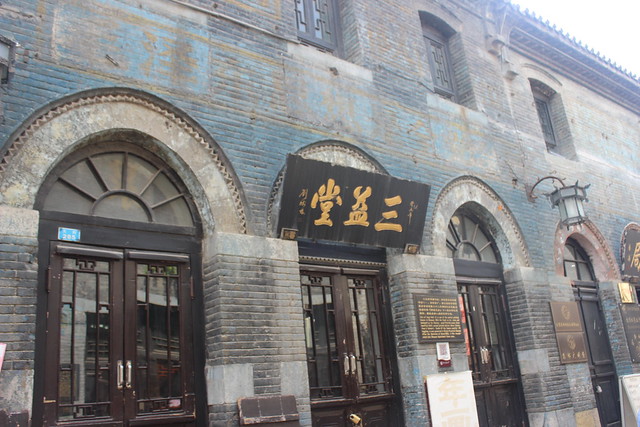
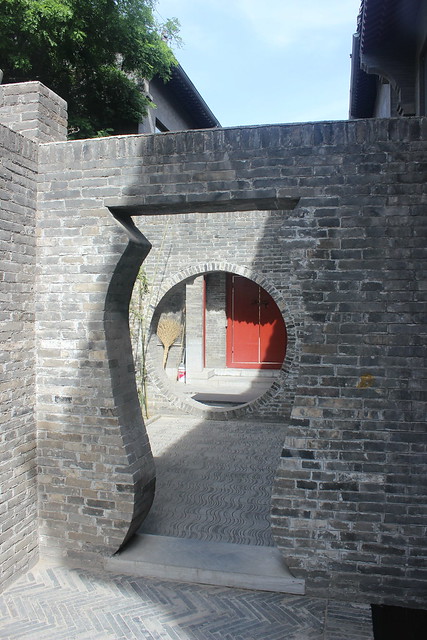 The part of Zibo where we live is very modern and new. Unlike our previous city in China, Ningbo, there are not old buildings with traditional Chinese architecture scattered around the city. So, visiting Zhoucun Ancient City was neat to see so much traditional Chinese architecture in one place! Having spent time in Korea and Japan now, it is interesting to see similarities and differences in buildings between cultures. The Chinese definitely use more of the color red because it is good luck.
The part of Zibo where we live is very modern and new. Unlike our previous city in China, Ningbo, there are not old buildings with traditional Chinese architecture scattered around the city. So, visiting Zhoucun Ancient City was neat to see so much traditional Chinese architecture in one place! Having spent time in Korea and Japan now, it is interesting to see similarities and differences in buildings between cultures. The Chinese definitely use more of the color red because it is good luck.
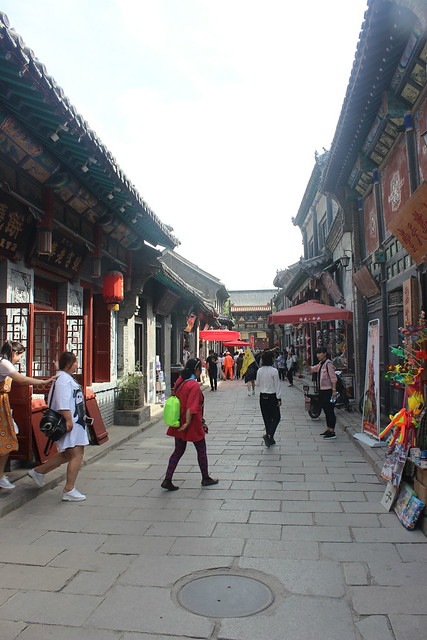
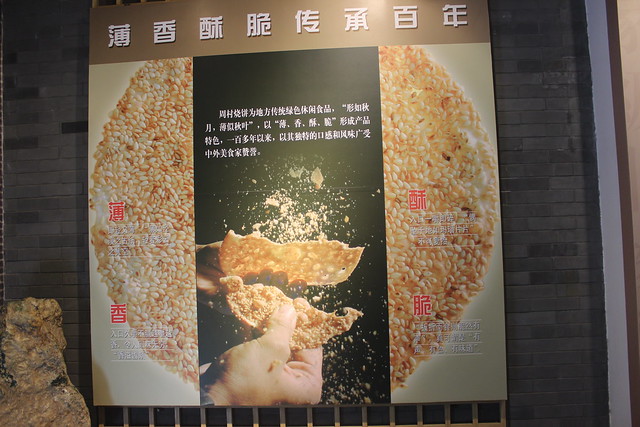 Every so often, we would see doorways to what looked like little museums or attractions. There was nothing in English, and with two little guys and a stroller we were not interested in investigating every doorway, but there was one that was wider than most, and many people were going inside. So, we decided to check it out. It was a museum about the history and production of the sesame cracker! It started as a convenience food for those taking the train. I couldn’t help but smile at the attention to detail and the size of this museum dedicated to a cracker.
Every so often, we would see doorways to what looked like little museums or attractions. There was nothing in English, and with two little guys and a stroller we were not interested in investigating every doorway, but there was one that was wider than most, and many people were going inside. So, we decided to check it out. It was a museum about the history and production of the sesame cracker! It started as a convenience food for those taking the train. I couldn’t help but smile at the attention to detail and the size of this museum dedicated to a cracker.
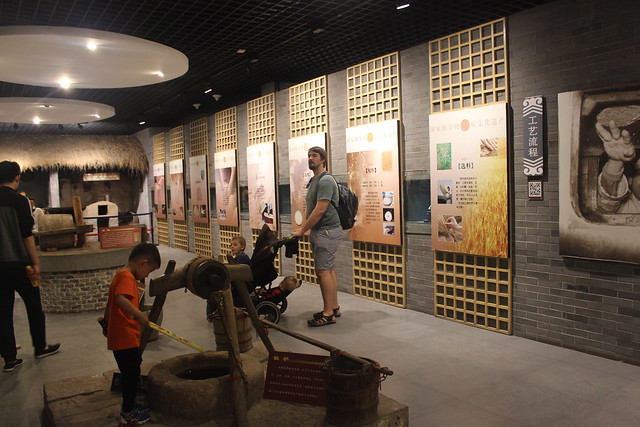
I thought of our friend, fellow traveler and museum studies master Teresita, and how much she would have liked it. There were very few placards in English, but it was easy enough to guess what each section of the museum discussed. There were room reconstructions and pieces of equipment used to make/process the various ingredients. It was a legit museum! 
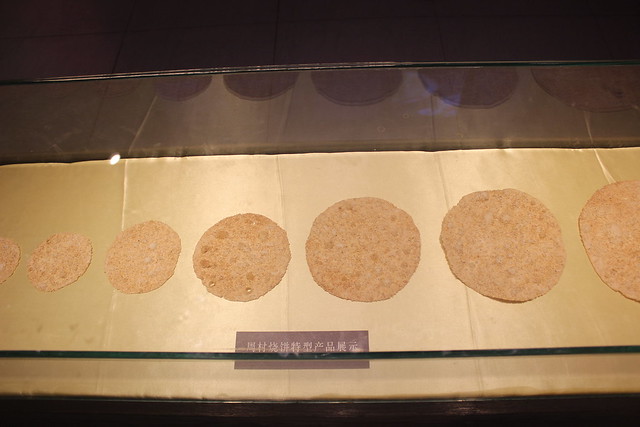
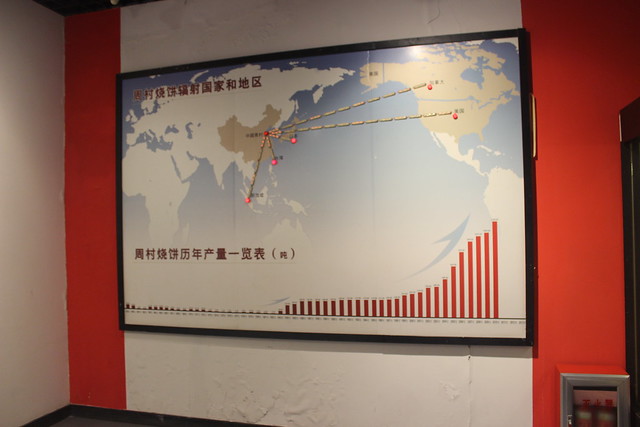
 Just when I thought we were coming to the end of the museum, we enter a dark room with a glass floor. Underneath our feet was the actual sesame cracker factory! In the museum, they discussed how some portions of production have to be done by hand, while others are handled by machine. It was so unexpected and awesome to then see all of the processes we had learned about in the exhibit. First, one worker makes uniform little balls of dough from a big vat of dough. The next person flattens out the dough until it is very thin, then dips one side in sesame seeds and puts in in the oven. The dough stays in the oven for a few minutes, and a sesame cracker pops out of the other side!
Just when I thought we were coming to the end of the museum, we enter a dark room with a glass floor. Underneath our feet was the actual sesame cracker factory! In the museum, they discussed how some portions of production have to be done by hand, while others are handled by machine. It was so unexpected and awesome to then see all of the processes we had learned about in the exhibit. First, one worker makes uniform little balls of dough from a big vat of dough. The next person flattens out the dough until it is very thin, then dips one side in sesame seeds and puts in in the oven. The dough stays in the oven for a few minutes, and a sesame cracker pops out of the other side!
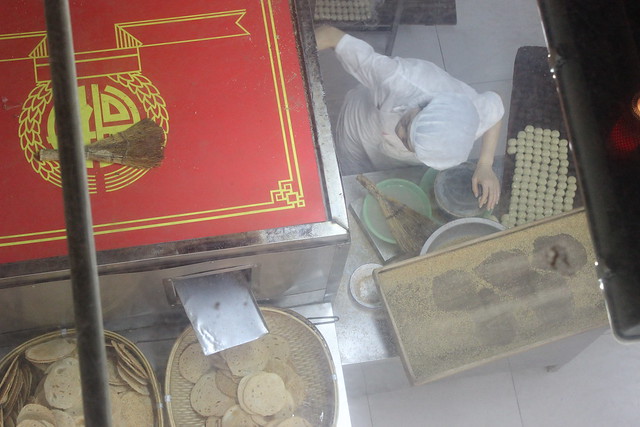
Next, we followed the museum route down a moving ramp to the factory. The walls were also glass so we could see the whole process. Landon and I watched while Austin bought a bag of fresh crackers for us to try. It was about $1 for four, so a pretty good deal!
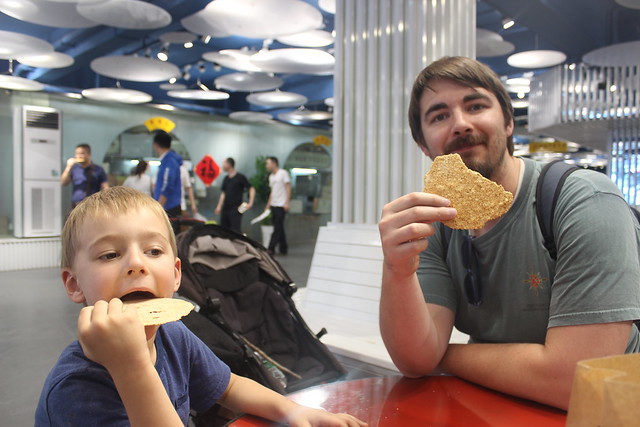
I had read that there was a small temple near the ancient city, so we headed down a side alleyway to check it out. It was a bit of a walk, and was very small. I think it was a Buddhist temple, but there was no information in English so I don’t know for sure.
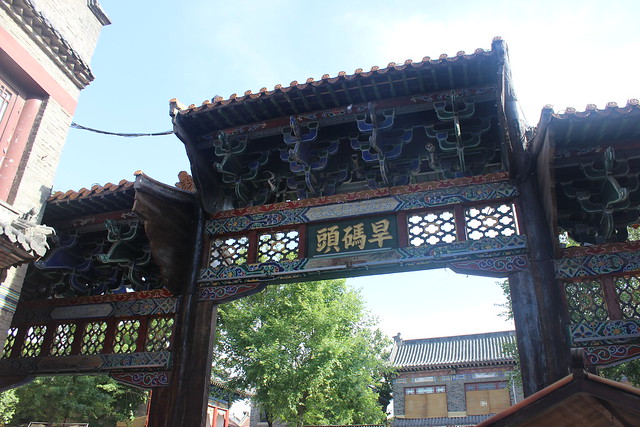 While we explored the little temple, Landon took a little digging in the dirt break. The temple was located right next to a small pond/river with nice shady trees and a path. We were not sure that the path met back up with the rest of the ancient city, so we went back the way we came. When we reached the part of the city we had not explored yet, the road was closed. As we got closer, we realized that a historical TV show was being filmed in the city, and so the road would close periodically so they could shoot scenes. We waited for a few minutes, and then walked down the road. There were some interesting props, lots of cameras and equipment, and actors dressed in period garb milling around in between takes. It was nice to have something else distracting from our presence there- we enjoyed a relatively peaceful walk without anyone asking for pictures for a few minutes.
While we explored the little temple, Landon took a little digging in the dirt break. The temple was located right next to a small pond/river with nice shady trees and a path. We were not sure that the path met back up with the rest of the ancient city, so we went back the way we came. When we reached the part of the city we had not explored yet, the road was closed. As we got closer, we realized that a historical TV show was being filmed in the city, and so the road would close periodically so they could shoot scenes. We waited for a few minutes, and then walked down the road. There were some interesting props, lots of cameras and equipment, and actors dressed in period garb milling around in between takes. It was nice to have something else distracting from our presence there- we enjoyed a relatively peaceful walk without anyone asking for pictures for a few minutes.
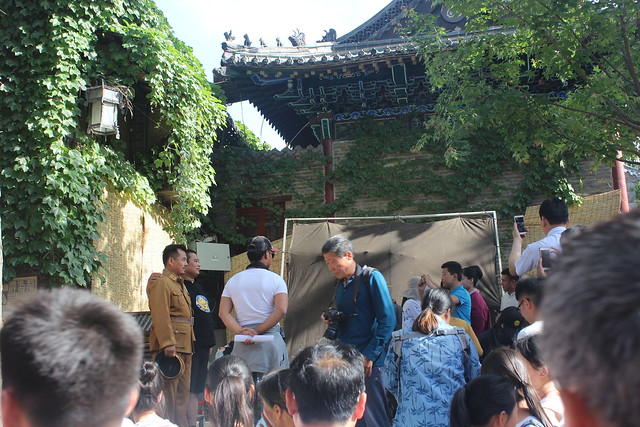
The Chinese tourists, who most likely knew the actors, were running up to them and asking for pictures during their breaks. I guess that’s what you get for being famous!
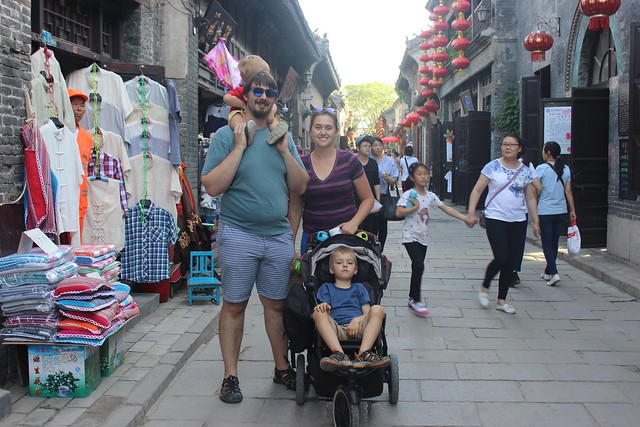 While wandering in the city, we had no idea where we were going. We ended up on the other end of the city, near the Zibo Art Museum. Had I known it was there, we would have gone inside, but by the time we made it there it was too late in the day. So, we took a picture by it and tried to hail a taxi. We discovered there were very few taxis on this side of the ancient city, so we decided to walk back to the other side to find one. While walking back, a sugar artisan ran over to us and wanted to take a picture with us. Then, we had him take a picture of us with our camera. Then he gave Landon a shrimp made out of sugar and took pictures of Landon with the treat. Then he wanted to pick up Owen. For some reason, everyone in China thinks Owen is a two-year-old girl, and are very surprised when they find out he’s a one-year-old boy. They also always comment on how heavy he is. Trust me, I know how heavy Owen can be! I guess it would be weird in the U.S. if someone came up to me and grabbed my baby, but here in China, especially in the Shandong province, everyone is kind and basically just curious. And Owen regularly tries to adopt himself into other families by wandering off with them. I have to watch him very closely!
While wandering in the city, we had no idea where we were going. We ended up on the other end of the city, near the Zibo Art Museum. Had I known it was there, we would have gone inside, but by the time we made it there it was too late in the day. So, we took a picture by it and tried to hail a taxi. We discovered there were very few taxis on this side of the ancient city, so we decided to walk back to the other side to find one. While walking back, a sugar artisan ran over to us and wanted to take a picture with us. Then, we had him take a picture of us with our camera. Then he gave Landon a shrimp made out of sugar and took pictures of Landon with the treat. Then he wanted to pick up Owen. For some reason, everyone in China thinks Owen is a two-year-old girl, and are very surprised when they find out he’s a one-year-old boy. They also always comment on how heavy he is. Trust me, I know how heavy Owen can be! I guess it would be weird in the U.S. if someone came up to me and grabbed my baby, but here in China, especially in the Shandong province, everyone is kind and basically just curious. And Owen regularly tries to adopt himself into other families by wandering off with them. I have to watch him very closely!
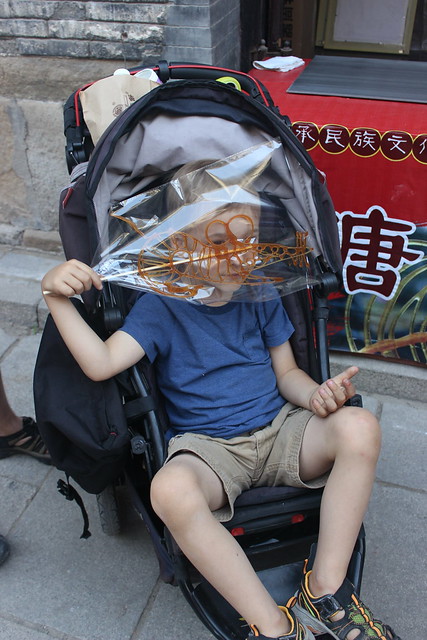
Zhoucun ancient city was a nice diversion for the afternoon. Make sure to visit the sesame cracker factory, and if you’re interested in film, arts, or silk, this is the place to visit in Zibo. Although it is 30 minutes outside of the city, it was a great taste of the local culture and history. You may even get to be on a movie set!
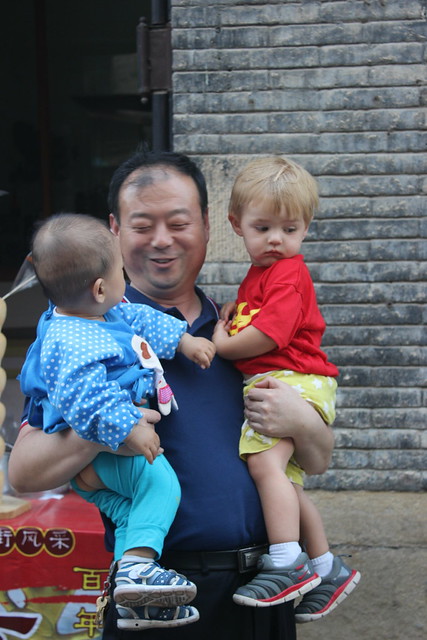

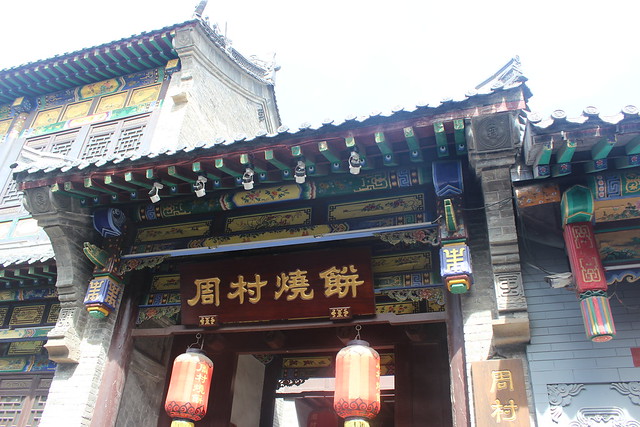

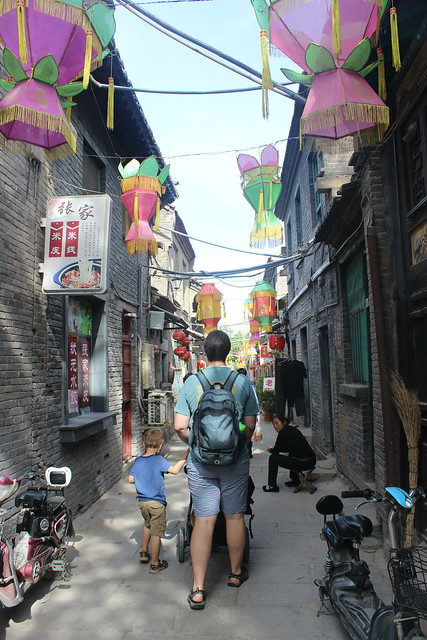



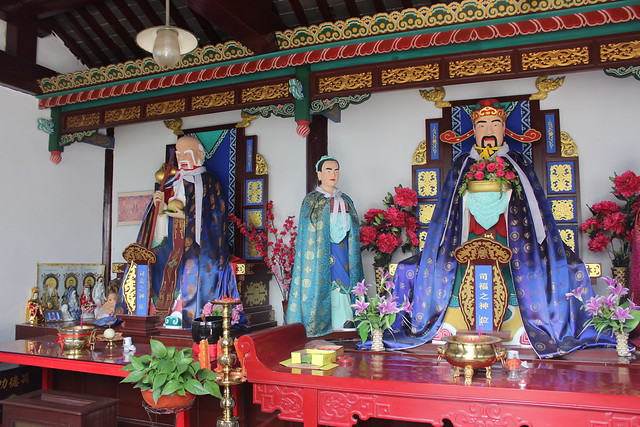
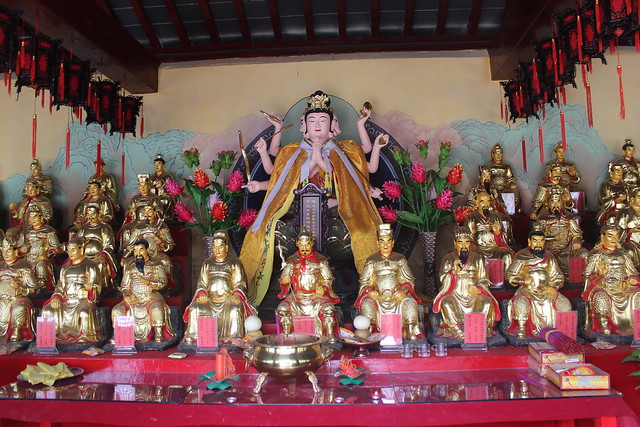

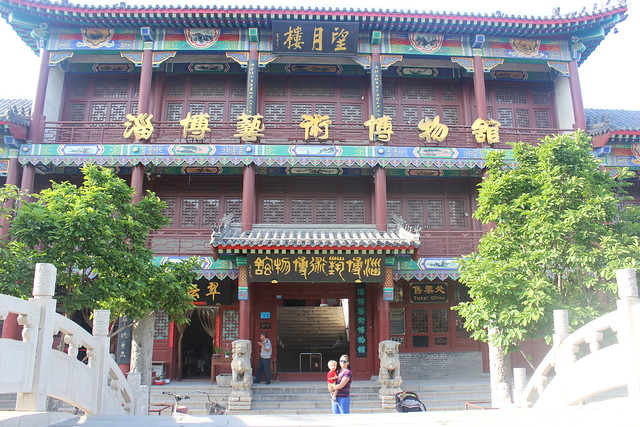
Oh I miss China. This sounds like a cool day. And I love the sugar maker picture with the split pants baby!
LikeLike
You know, I miss the Zibo area too. I wish we had more time in Zhoucun, we went in the afternoon during the TV shoot, so there was not as much time to explore as I would have liked. Gotta love the split pants. Did you ever have to buy some for Peter? Or did you have enough clothes from America?
LikeLike